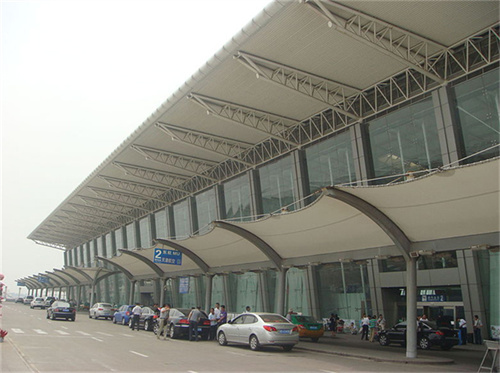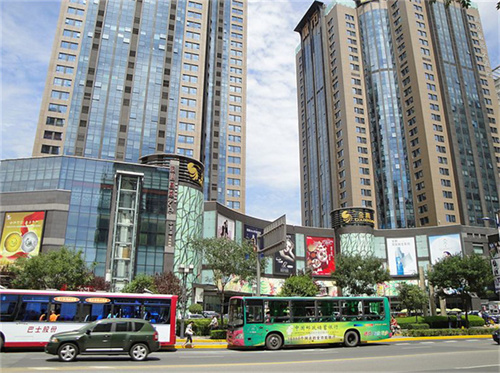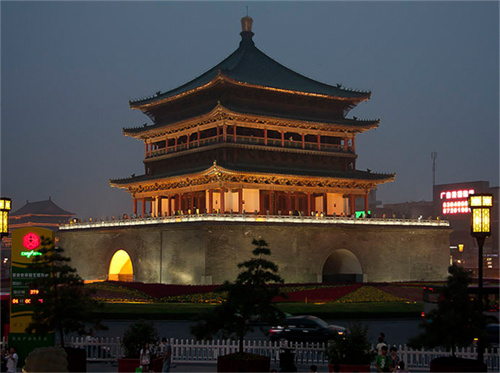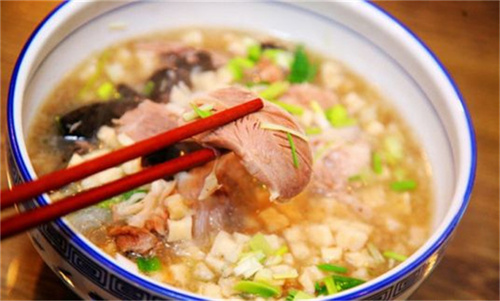Territory
China is located at the east coast of the largest continent (Eurasia) as well as the western margin of the largest ocean (Pacific). It has a land area of about 9.6 million square km, occupying 6.5 percent of the total land area of the world. From the confluence of the Heilong River and its tributary, the Wusuli River, westward to the Pamir Plateau, the distance is more than 5200 km. From midstream of the Heilong River north of Mohe, southward to Zengmu Shoal of the Nansha Islands near the equator, the distance is more than 5500 km. Its population of more than 1.3 billion accounts for approximately one-fifth of the world population...
MOREStudy in Xi'an
One of the historical cities that foreigners must go and see, well known for Terra-Cotta Warriors.
City Type: Peaceful Towns
Climate: Moderate
Air Quality: Average Air Quality
Average: 2000 -- 2500 RMB
University Amount: 16
Xi'an Transportation
The urban transportation of Xian has been developed rapidly in recent years. The second ring road, third ring road and freeway-ring around the city have all been completed and put into service. The city buses and suburban buses can bring you to every corner of the city. Also, to meet the development of the tourism industry, tourist special buses and sightseeing buses are now operating. Although traffic congestion happens now and then, it is much better than that of Beijing and Shanghai. The local government also does a lot to relieve the traffic pressure, including widening roads, building pedestrian overpasses and running inter-zone buses, etc.


Xi'an Weather
Xi'an weather is mild with four distinct seasons - a warm but variable spring, a torrid and wet summer, a cool and rainy autumn and a dry and cold winter. The annual average temperature is 13.5°C (56.3°F). The city has a moderate rainfall rate caused by the frequent summer storms and a succession of overcast and rainy days in autumn.
March to May is usually warm and pleasant and is the best time of the year to pay a visit. Early autumn running through September and October is also a good time for a visit.

Xi'an Attractions
Brilliance of thousand years endows Xi'an with enchanting temperament. The continuous history of the ancient civilized capital has apparently resulted in its magnificent culture. Today's Xi'an is a world famous tourist city and an inexhaustible treasure house of cultural relics. Now, heads of state from many countries and people from all walks of life come to the city to broaden their knowledge of Chinese civilization.

Xi'an Food
Xi'an's special snacks and specialties are really delicious. Special snacks include dumpling banquet, beef and mutton steamed buns, cold noodles, etc. The taste of beef and mutton steamed buns is really different. The mutton steamed buns are steamed with sheep's head, which is very fragrant. The specialties include stele forest tablets, sour plum powder, imitation Tang Sancai, imitation Qin terracotta warriors, imitation Qin bronze chariots and horses, dog head dates, red dates, etc., and many more.
Beef and Mutton Steamed Bun
Beef and mutton steamed buns evolved on the basis of ancient beef and mutton soup. Many ancient documents, such as "Book of Rites" and pre-Qin philosophers, have mentioned beef and mutton soup. At first, it was mostly used for sacrifices and royal banquets. Abstract Xi'an Beef and Mutton Steamed Beef and Mutton Steamed Bun is a delicacy in Shaanxi, especially in Xi'an. It is cooked finely, the ingredients are heavy and mellow, the meat is rotten and the soup is thick, fat but not greasy, rich in nutrition, full of aroma, tempting appetite, and endless aftertaste after eating













